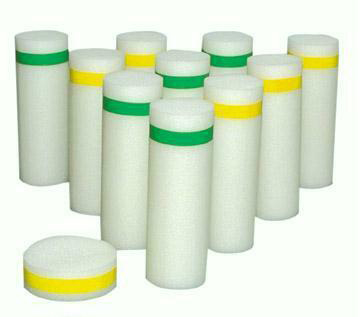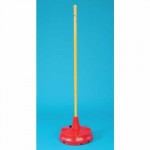Musical Hula Hoops or Polyspots: These items are interchangeable. We introduce them at separate times.
Take Hoops to Gym Homes (Designated personal space)
- Stand tall on one foot
- Low balance on one foot
- Hop on 2 feet out of hoop – Hop back in – 10 times
- Hop on one leg out of hoop Hop back in – 10 times
- Skip around hoop forwards
- Skip around hoop backwards
- Jump up and do a 360% turn
- Hoop Spinning: Balance hoop with top hand and roll it forward
- Back spin technique Bring hoop backwards to the side
- Throw the hoop forward, flick wrist to create spin
- Roll your hoop backwards then try to catch it on your foot
- Partner Hoops: Roll your hoop with a partner at the same time
At Your Hoop:
- Compass: Feet in hoop – Move hands around outside of hoop.
- Around the World – Hands in hoop – Walk feet around outside.
- Skip around hoop forwards, then backwards.
- Step through your hoop, when it’s standing.
Musical Hula Hoops
Equipment and Setup: Hula hoops are spread around the floor in random order. The teacher gives direction, then starts the music, student move in the locomotor skill indicated. When the music stops students balance on one foot inside of a hula hoop near them. Then, the teacher demonstrates different actions to complete at the hoop. When this is complete, the teacher gives a different locomotor skill to move in. The warmup continues in this fashion.
- Slide Step: click heels in the middle
- Skipping
- Jogging
- Galloping
In and Out Hoops:
Setup and Equipment: Hoops are spread out around around the floor in a random manner. On the teacher signal students follow the directions below one at a
- Round One: Step into as many different hula hoops as you can. Give them about 30 seconds or so to do this. Then stop the music and ask how many hoops they were able to complete.
- Round 2: Jump with two feet into as many different hula hoops as you can. Give them about 30 seconds or so to do this. Then stop the music and ask how many hoops they were able to complete.
- Put both feet in and touch the floor with your hand. Give them about 30 seconds or so to do this. Then stop the music and ask how many hoops they were able to complete.
- Lift the hula hoop over your hand and back to floor. Give them about 30 seconds or so to do this. Then stop the music and ask how many hoops they were able to complete.
When music stops, stand on one foot and balance. Then follow teacher directions and do the following:
- Jump side to side ten times – both feet
- Jump forward and back ten times
- Jump back on two feet – land on one
- Jump sideways on two -land on one
Hoop Driving: Setup and Equipment
- One Hula Hoop for each student.
- Set cones (at least four) up as the outline for a large track on the floor.
Hoop Driving Guidelines:
Today students will be simulating driving a car by holding their hula hoop in the air as if it were a giant steering wheel.
- Spread students out around the giant circle which is designated with the four cones.
- Students will be following the directions of the teacher as they move around the gym in a counterclockwise direction.
Driving Actions: Teacher led demonstration followed by the students practicing the skill as they move around the gym.
- Car Start and Drive Away Snow: Turn the key or tell Siri to start it: Start your engine!
- Grease: RED Light – Stop – Stop your car and wait.
- You Make Me Feel Like Dancing: School Zone – Skipping happily!
- You Can’t Stop the Beat: Yellow light – Move slowly
- I’m a Gummy Bear: Tunnel – Walk low to the floor
- Don’t Stop: STOP – Stop your car
- Life Is a Highway: Highway – Move faster, jogging and running
- Yakety Yak: Oil Slick – It’s very slippery, so be careful. Quick turns
- Sirens-Remix (Sound Effect) Highway Police! – Pull over to the right.
- I’m Walkin’: Flat Tire – Hop on one
- Cha-Cha Slide Radio: This song is so good on the radio that you are going to pull your car over and dance inside your hoop.
- Banana Song (From the Minion Movie): Potholes – leap over the holes
- Vehicle Reversing Beep: Reverse – Walk backwards
- Happy: School Zone – Skip backwards in Reverse
- Stuck in the Mud: Jog in place
- Interstate: Put your Car on cruise control
- Rain: Hold your steering wheel with one hand and use the other as a windshield wiper.
- Radio: The song is so good on the radio that you are going to pull your car over and dance inside your hoop.
- Sunshine: Reach into the glove compartment to pull out cool shades — put them on using the “John Travolta” fingers in a “V” shape moving over the eyes
- Muddy Road: Slide in the mud by sliding feet & moving hips
Musical Hula Hoops
Setup and Equipment
- At least one hula hoop for each student in class.
- Spread out hula hoops randomly on the floor.
- Students stand in a hula hoop – Music starts and students begin a loco-motor movement.
Guidelines: Teacher Directed
- Move outside of the hula hoops and when the music stops, step into the hoops that you are closest too.
- When music stops, students stand in a hoop and balance on one foot.
- Locomotor Skills: Skip, gallop, slide-step or grapevine, jogging, power walking
Cinchy Relay: 1/2/3/4/5
Setup and Equipment
- 6 Hula hoops and a large cone near the starting line
- 6 Teams line up in relay style at one end of the gym.
- Use hoops that correspond to their color teams if possible
Guidelines
- The teacher rolls 6 hula hoops to the end of the gym at the same time
- The first teams in each line runs to the other and and pick up one of the hoops and return it by putting it over a large orange cone that is set up in the middle near the starting line
- Go to end of line after each turn.
Hoop Activity Links:
Hoop D’jour
Arctic Wind Hoops




